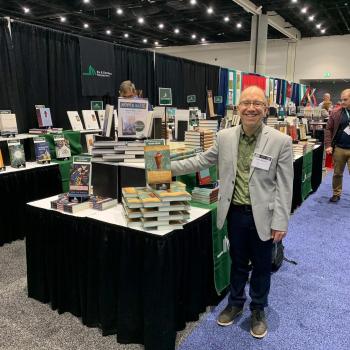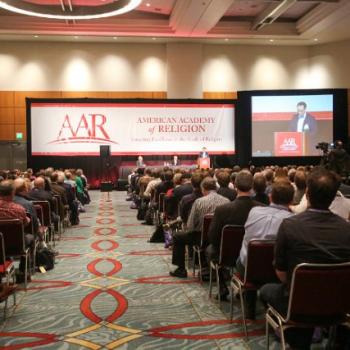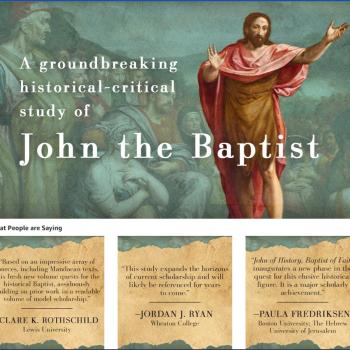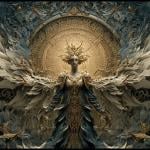In the past I’ve tried to blog while at the AAR and SBL joint annual meetings, and I may manage on some future occasions. This year my conference was packed too full for that to be feasible, and wonderfully so. And so instead I am sharing some highlights after the fact, which I know many other attendees will still appreciate. I have a long list of sessions I’d have loved to be at, but could not, and will be happy if anyone chooses to blog about them and allow me a glimpse of what I missed. High up on that list is the review session about Joel Marcus’ book, which was rather frustratingly scheduled at the exact same time as the review panel about the Mandaean Book of John: Critical Edition, Translation, and Commentary, which was out just in time for the conference and which is the focus of this post.
First let me express my gratitude to the organizers of the session (the SBL MEGA program unit, which stands for Mysticism, Esotericism, and Gnosticism in Antiquity, together with the AAR Traditions of Eastern Late Antiquity program unit). It included two fascinating papers and another book review panel. They all converged with great coherence and connectivity between them around the theme of “Esoteric Religious Groups in Antiquity.” The session started with a review panel focused on Michael Stone’s book Secret Groups in Ancient Judaism. It continued with two papers: Christian Bull speaking about Hermetic material in the insufficiently-studies anthology of Johannes Stobaeus, and Tuomas Rasimus on the blending of the two arks – Noah’s ark and the Ark of the Covenant – in ancient Jewish, Christian, and Gnostic sources.
The portion of the session devoted to the Mandaean Book of John volume started with Charles Haberl explaining why a new edition was needed when there is a German one by Lidzbarski that most academics can read. There have been major advances in the study of Aramaic linguistics and of the Mandaean community since Lidzbarski published his translation a little over a century ago. When some ten years later he published a German translation of the Ginza, he did so in a way that reflected its versification. Doing that in our edition exposed problems with some of Lidzbarski’s renderings, most notably his rendering of certain words as “Messiah Paul.” In fact, the two words belong on separate lines and not together. Charles’ own work on the language of the Book of John showed that the work is a compilation of very ancient and more recent materials which have been brought together.
I used my own time to highlight that this publication, even if it represents the end of about 9 years of effort on the project, really marks the beginning of an era. It was impossible to accurately determine the significance of the Dead Sea Scrolls or the Nag Hammadi texts until the longest and most important of them were translated into English, allowing academics beyond the range of certain narrowly-focused specialists to look into how they relate to materials in other fields.
Can the Mandaean sources tell us about the origins of Gnosticism? Probably, even if they don’t do so in quite as direct a way as I suspect. If nothing else, we can compare Gnosticism in an Egyptian, Greco-Roman, Greek and Coptic language context with Gnosticism in a Mesopotamian/Persian Aramaic language context. Gnosticism is inherently eclectic/syncretistic, and so comparing what is borrowed in these two traditions may allow clearer identification of what lies at the root of this phenomenon.
Can the Mandaean sources tell us about the historical figure of John the Baptist? Once again, I believe so, as long as they are used more critically than they were by Bultmann, but not dismissed as they were by Dodd. I proposed a thought experiment. Imagine if all we had for Jesus were a brief reference in Josephus and Tacitus, and the Nag Hammadi texts. Historians would not ignore the latter. They might end up with a distorted picture as a result, or might decide that the vast majority of what is in there needs to be ignored. But they would use them. The Mandaean literature in relation to John the Baptist is a very similar situation. But even if one concludes that it is impossible to draw anything but a twisting dotted line between John and the Mandaeans, their texts and rituals are still useful in raising new questions and possibilities. One that I am currently delving into is their repeated baptismal rite. If John’s baptism was indeed “for the forgiveness of sins” and thus an alternative to (or at least an alternative form of) sacrifice, a repeated rite would be more natural and more fitting. If Christians then turned it into a one-time conversion rite, that would explain why they immediately found themselves with the conundrum of what to do about post-baptismal sin.
I ended my brief introductory remarks by appealing to scholars in any and all fields to turn attention to the Mandaeans, if only at points of intersection with their own areas of interest and expertise, just as has been done with the Dead Sea Scrolls, the Nag Hammadi texts, Rabbinic literature, Josephus, Philo, and much else. I may be wrong about many things, and that will only become clear when far more scholars have turned their attention to these fascinating texts and the lived Mandaean tradition than have done so thus far.
The first of the two reviewers on the panel was Jorunn Buckley, a rarity inasmuch as she is one of the very tiny number of scholars to have ever made Mandaeism their primary focus of research. She emphasized having been in “this business” since the 1960s, and told stories of her visits to Iran. Her copy of Lidzbarski’s edition is well-worn, and she expressed appreciation for the Mandaic font we had developed especially for our book. Lidzbarski resorted to writing the Mandaic text by hand! She found the translation too modern in its expression in places, a sentiment that the second reviewer, Edmondo Lupieri, would also voice. In response, Charles emphasized that this was indeed a deliberate choice, to try to do justice to the puzzling nature of some aspects of Mandaean literature and yet still allow them to be read in a manner that favored the target language, in this case English. Lupieri said he will treasure this volume, that it will be the basic text for the next century (and perhaps longer) just as Lidzbarski was for the past century, and that everyone should be grateful for what we’ve accomplished. I was struck by how many of our points that I thought he might disagree with he instead found thoroughly persuasive: the grammatical analysis, the treatment of the term “dome” used for the temple, and the inclusion of a wider array of manuscripts with separate copying lineages and distinct features indicating a much longer and more complex history of transmission than might be thought when one only worked with the manuscripts available to Lidzbarski.
I was delighted by the turnout for the session, and in particular that some local Mandaeans came. The level of enthusiasm and interest is beyond what I dared to hope for.
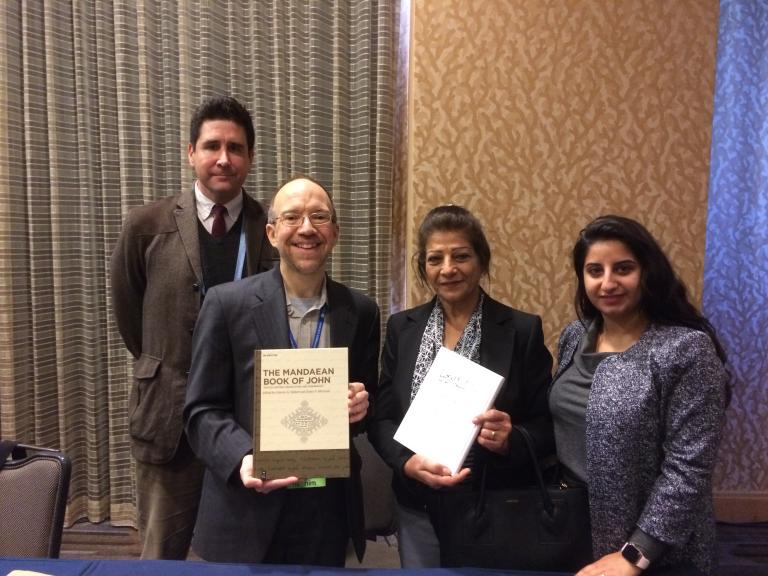
If you’d like to acquire a copy of The Mandaean Book of John: Critical Edition, Translation, and Commentary, you can use the coupon code 20191123 on the De Gruyter website and receive the conference discount. It is an expensive volume, but one that deserves to be in the library of any academic institution where religion is studied.






